

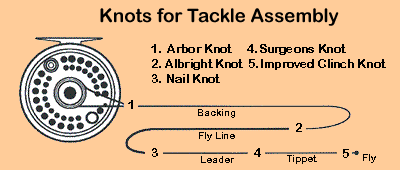 | |||
1. Arbor Knot: Attaching the Backing to the ReelThe arbor knot is a slip knot in which an overhand is tied on the tag end of the backing, pass the backing around the arbor and tie another overhand around the standing part of the line drawing it closed but not tight. Pull on the standing part of line and the overhand knot slides down against the arbor. Keep pulling until the first overhand knot jams against the second one. | |||
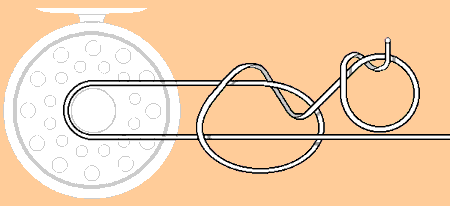 | |||
2. Albright Knot: Attaching the Flyline to the BackingThe Albright Knot is named for Capt. Jimmy Albright of Florida in the 1940's. It is excellent for connecting the backing to the fly line or connecting two monofiment lines of unequal diameters. The knot can also be very useful in connecting shock leaders. Loop the fly line and pass the backing through the loop. Use about 10 turns of the backing over the loop and feed the tag end back through the loop on the same side as it went in. Slide the turns to the end of the loop and tighten the tag end of the backing. The knot should be tight and smooth. Some like to finish the knot with flexible cement for a smooth passage through the guides. | |||
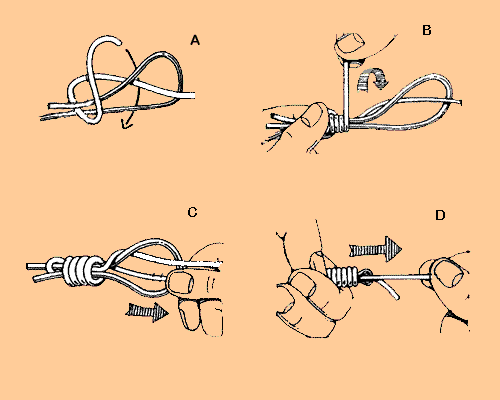 | |||
3. Nail or Tube Knot: Attaching the Leader to the Fly LineThis knot makes a relatively smooth knot holding the leader or the shock cord to the flyline. Many leaders today have a loop to loop connection for easy removal and a section of heavy monofilament is attached with a nail knot to the fly line with a perfection loop on the tag end. A nail knot tool is usually necessary and can be found incorporated within many of the nippers sold within flyshops today. The tool replaces the need for a nail or tube. | |||
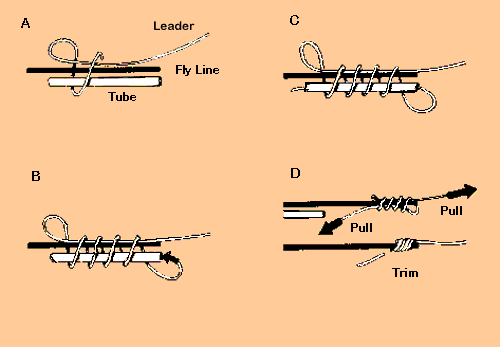 | |||
4. Double Surgeon Knot: Attaching the Tippet to the LeaderThe Double Surgeons knot is an easy way to join the tippet to the leader. It is basically a double overhand knot. Lay the two lines together with an overlap of 6 inches. Tie an overhand knot holding the two strands together, then tie another. The knot does leave a lump, even after the tags are trimmed tight. To get a more streamlined knot, try the Blood Knot. It is usually required when the monolines are of different diameters. | |||
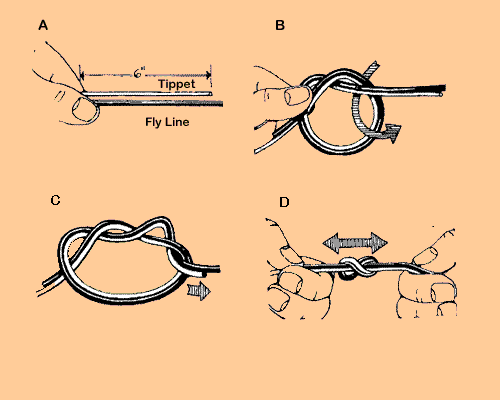
| |||
5. Improved Clinch Knot: Attaching the Fly to the TippetThe Improved Clinch knot is one of the most common of fishing knots. The tag end is put throught eye of the hook and twisted around itself about 5 times. the tag is then passed between the first twist behind the eye and then through the loop it made. Always moisten the knot before clinching. | |||
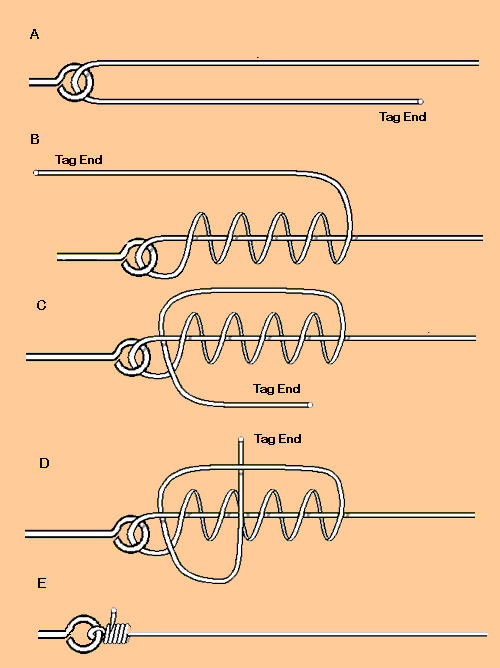 | |||
Perfection LoopThe Perfection Loop is also known as the Angler's Loop. It is an easy clean knot to create a small loop at the end of a tippet or leader. Often used in loop to loop connections between a fly line and a leader. Many fly lines today have a molded loop built into the fly line. If a loop does not exist on the flyline, the angler can create a loop section with a nail knot to the fly line. The perfection loop is also useful in attaching streamers and nymphs to allow free movement from the tippet.
| |||
 | |||
Blood KnotA blood knot (or barrel knot) is two back to back clinch knots and is most used for joining sections of monofilament nylon line of similar weight while maintaining a high portion of the line's inherent strength. Other line joining knots used for this purpose can cause a substantial loss of strength.The principal drawback to the blood knot is the dexterity required to tie it. In fly fishing, this serves to build a leader of gradually decreasing diameter with an easily cast fly line attached at the large diameter end and the fly or hook at the small diameter end.
| |||
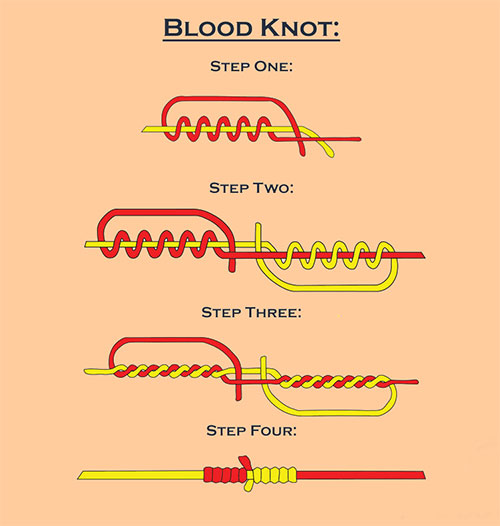 | |||